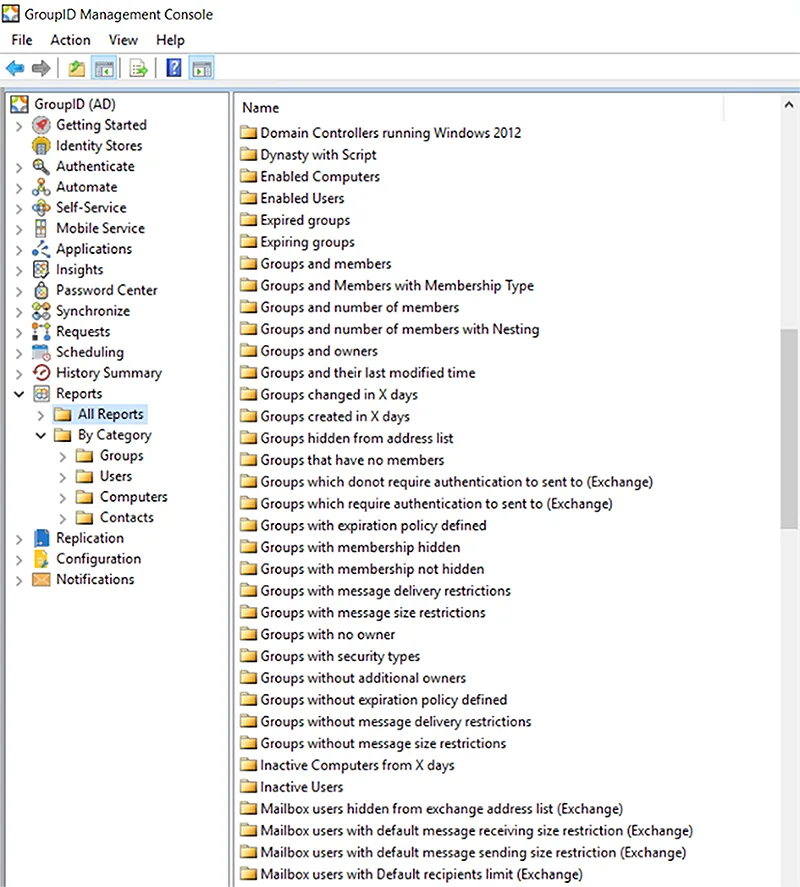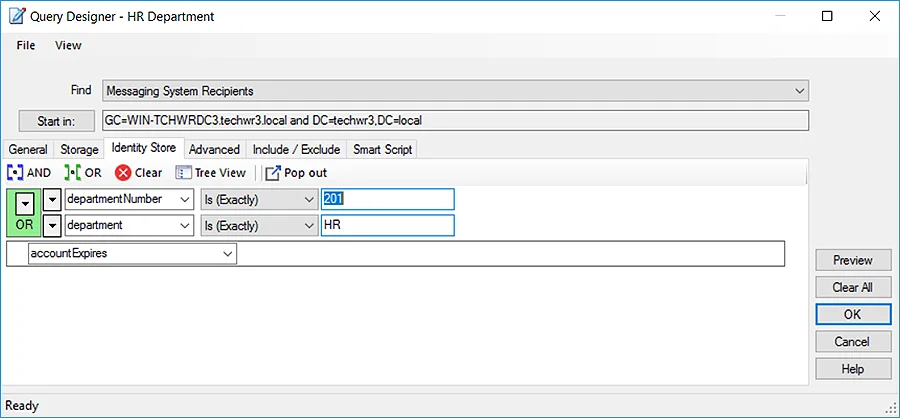When you think of Active Directory health, the first thing that comes to mind is that the directory should be organized and running smoothly. Stable directory health revolves around certain indicators, such as:
- The groups are up to date
- Only the users currently engaged with the company exist as active users
- No unwanted objects exist in the directory
Active Directory works fine even if it is not 100% healthy. But such scenarios usually hide problems until they shape into something huge. That is when the helpdesk is bombarded with a flood of calls, indicating the possibility of a crisis.
Therefore, it is important to apply regular assessments to prevent any critical situation.
Monitoring Active Directory
Monitoring Active Directory requires different tools that assess the environment to detect and resolve issues that can harm the entire directory. These monitoring softwares collect performance counters and analyze Microsoft libraries. Then these statistics regarding Active Directory are presented in the form of:
- Reports
- Graphs
- Visuals
- Centralized dashboards
Active Directory monitoring software ensures optimal health and performance of the directory. Whenever these tools detect any abnormality, they trigger an alarm to alert the helpdesk.
Areas to Probe for an Active Directory Health Check
Organizations rely on Active Directory for network management and security. Hence, your directory’s health is vital to your organization. While determining the overall health of Active Directory, you must pay attention to the following:
- State of Services and Security Configurations
- State of Permissions
- State of Group Memberships
- State of Groups
- State of AD Management
Let’s define each of the above areas pertaining to Active Directory health:
State of Services and Security Configurations
Active Directory health revolves around the services and configurations it works with. Hence, Active Directory health assessment involves an evaluation of the following:
- Core services that Microsoft provides: One area of Active Directory health assessment is to ensure that core services provided by Microsoft are running properly.
- Configurations that IT implements within Active Directory: Relevant configurations in Active Directory, such as security configurations, should be maintained regularly to ensure relevant access to resources, thus contributing to good Active Directory health.
State of Permissions
Active Directory permissions are critical because they contribute to network security. Make sure users and groups are not overly permitted to avoid any misuse of critical information and data. Revising and auditing Active Directory security and distribution groups’ permissions regularly can strengthen security.
State of Group Memberships
Groups are a primary means of assigning permissions. Hence, keeping group memberships in check is as important as scrutinizing permissions.
State of Groups
For stable Active Directory health, group glut should be avoided. Group glut refers to a large number of groups that have served their purpose and are no longer needed, yet continue to exist in the directory. Such groups mostly retain their memberships and permissions, which could be exploited. Hence, these groups should be deleted from the directory in a timely manner.
State of AD Management
AD management refers to managing your Active Directory’s security, groups, and memberships. If you do not have a formal process that, at a minimum, reviews the current state of the three items in this list, you are not truly managing Active Directory. You are simply addressing helpdesk tickets.
Microsoft Tools for AD Health Check
Microsoft provides different tools to monitor Active Directory health. Some of them are as follows:
- Best Practices Analyzer (BPA)
- Microsoft Product Support (MPS) Reports
- Repadmin
- DCDiag
- DNSCMD
Following is a discussion of these tools.
Best Practices Analyzer (BPA)
BPA scans roles that are installed on managed servers and highlights any kind of vulnerabilities or setup issues with any role. With this, administrators can limit best practice violations on the servers.
Microsoft Product Support (MPS) Reports
MPS Reports gathers detailed configuration information computers on the network through scripts and utilities. This reporting tool captures data related to Windows Update Services, Exchange servers, SQL, server components, internet and networking, and more. This information helps IT professionals troubleshoot issues with the directory.
Repadmin
Repadmin helps diagnose replication issues in Active Directory. Run Repadmin.exe commands to display the replication status of all domain controllers and identify those that are failing outbound or inbound replication. All results are presented in the form of a report. For Active Directory health check, you can easily see the domain controllers that are not replicating, check the time when they last replicated, and identify the reason why they stopped.
DCDiag
DCDiag is one of the most important diagnostic command line tools that Microsoft introduced. It conducts detailed analysis though 30 different directory health checks and identifies abnormal behavior. With DCDiag, you can check the connectivity of DNS servers, errors in replication, accessibility of RID Manager, registration status of machine accounts, logon permissions, and much more.
DNSCMD
The DNSCMD command line manages DNS servers. For example, if you are working in a remote environment and want details about that environment, you can use the DNSCMD command-line. Below are some of these commands and their functions.
| COMMAND | FUNCTION |
|---|---|
| DNSCMD /INFO | Displays server properties |
| DNSCMD /ZONEINFO <ZONE NAME> | Shows zone properties |
| DNSCMD /ENUMZONES | Displays all DNS zones present on the network |
| DNSCMD <SERVERNAME >/ZONEEXPORT <ZONE NAME > <OUTPUT FILENAME> | Dumps all DNS records in the zone |
Symptoms of Poor Active Directory Health
While checking Active Directory health, stay on the lookout for the following symptoms of declining health:
- AD Replication Issues
- User Account Lockouts
- Group Policy Issues
- Event Logs
- Orphaned Objects
- DNS Issues
- Logon Failures
- Active Directory Database Issues
Active Directory Replication Issues
Active Directory is effectively a distributed identity management system that is replicated across all domain controllers in the environment. Issues with AD replication will result in an inconsistent Active Directory, meaning new users and other objects will not be visible in parts of the network.
Replication issues do not appear immediately and if you fail to monitor replication, it may lead to serious issues at a very critical time. You can use the DCDiag tool to keep a check on the replication status and identify errors before they turn into something bigger.
User Account Lockouts
Users can face account lockouts without any apparent reason. One reason for such lockouts can be automated scripts or processes that are configured to use an account for performing different tasks.
Group Policy Issues
Businesses use Group Policy to control the environment configuration. Printer mappings, file share mappings, and even Wi-Fi connections are all controlled via Group Policy and that is just the tip of the iceberg. When issues arise with Group Policy or replication, user experience is negatively impacted.
Event Logs
Event logs are the first step in the troubleshooting process. During a health check, you will want to examine the event logs on the domain controllers. Event IDs noted in the events themselves will often indicate, with good accuracy, what is going on in Active Directory.
Orphaned Objects
A poorly maintained Active Directory can very easily become cluttered with objects that no longer exist. While this is not technically terrible when it comes to workstations and users (although a security risk), things do start breaking down when domain controllers and servers are improperly decommissioned and left orphaned. This issue is usually the most common of those listed here.
DNS Issues
Most of the issues that Active Directory faces are related to DNS. This includes wrong DNS name registration or improper forwarder configuration. The DCDiag tool can help check DNS registration for all the domain controllers and analyze RPC and LDAP connections to each domain controller.
Logon Failures
Organizations are concerned about security. Administrators look out for any unauthorized logon attempts as repetitive logon attempts indicate a cybersecurity breach.
Active Directory Database Issues
Every object in Active Directory occupies some space in its database. For optimal performance, domain controllers cache AD databases in RAM. Hence it is considered a better option to keep your database size under control.
Active Directory Health Measures and Analysis via GroupID
Performing a complete Active Directory health check should not be time-consuming or difficult. GroupID is another tool that enables an IT admin to analyze AD health. The following GroupID modules assist in Active Directory health check:
- GroupID Reports
- GroupID Self-Service
- GroupID Automate
Let’s discuss the role of each of these modules in enabling IT admins to analyze Active Directory.
GroupID Reports: Get AD Insights
GroupID Reports runs reports on Active Directory and Microsoft Exchange. To simplify navigation, reports are divided into following categories:
- Users
- Groups
- Contacts
- Computers
Managing Active Directory becomes harder over time due to an ever-increasing object count and your inability to track each one of them. It helps you monitor these objects by presenting and sorting information from different angles, leading to informed decision making.
Use Case: Get a List of Orphan Groups in AD
You can get a list of orphan groups in the directory by running the “Groups with no owner” report. You may then choose to discard orphan groups or assign owners to them. It hardly takes a minute to generate the report.
Here is a list of templates that GroupID Reports provides to generate reports.

GroupID Self-Service: Delegate Group and User Management
GroupID Self-Service is yet another tool for managing users and groups. Users can carry out their own directory and group management tasks without relying on administrators.
To ensure good Active Directory health, GroupID Self-Service enables the users to manage the following:
- Groups
- Groups Memberships
- Directory Profiles
Use Case: Automatically Delete Inactive Objects in AD
By attesting their groups and expiring those that are no longer needed, users can prevent clutter in the directory. Similarly, profile validation distinguishes active users from inactive users, enabling administrators to delete inactive objects and keep the directory up to date.

GroupID Automate: Automate AD Group Memberships
GroupID Automate updates the groups based on user-defined queries. When user attributes change in the directory, Automate updates the relevant groups automatically, thus ensuring that groups are never out of date.
Use Case: Update Group Membership via User-defined Query
For example, group membership can be updated based on the ‘department’ attribute through a user-defined query. When employees change departments, these queries will work as follows:
- Automatically check user attributes
- Add users as members to their relevant department groups
- Remove those members who are no longer a part of that department
Here is the query for a group with membership based on “Department = HR”, defined in Automate’s Query Designer.

Conclusion
Since many organizations today use Active Directory, ensuring its health becomes a mandatory task. With a healthy directory, you can manage your users, groups, and resources, in a secure manner.
Over time, several tools have been introduced to ensure Active Directory health. These tools examine different aspects of AD to assess its health, such as the state of objects and the state of core services provided by Microsoft.
GroupID too, provides solutions that aid administrators in monitoring Active Directory health. It is the responsibility of the admins to adopt monitoring and reporting tools for a stable Active Directory.
Jonathan Blackwell
View ProfileSince 2012, Jonathan Blackwell, an engineer and innovator, has provided engineering leadership that has put GroupID at the forefront of group and user management for Active Directory and Azure AD environments. His experience in development, marketing, and sales allows Jonathan to fully understand the Identity market and how buyers think.

